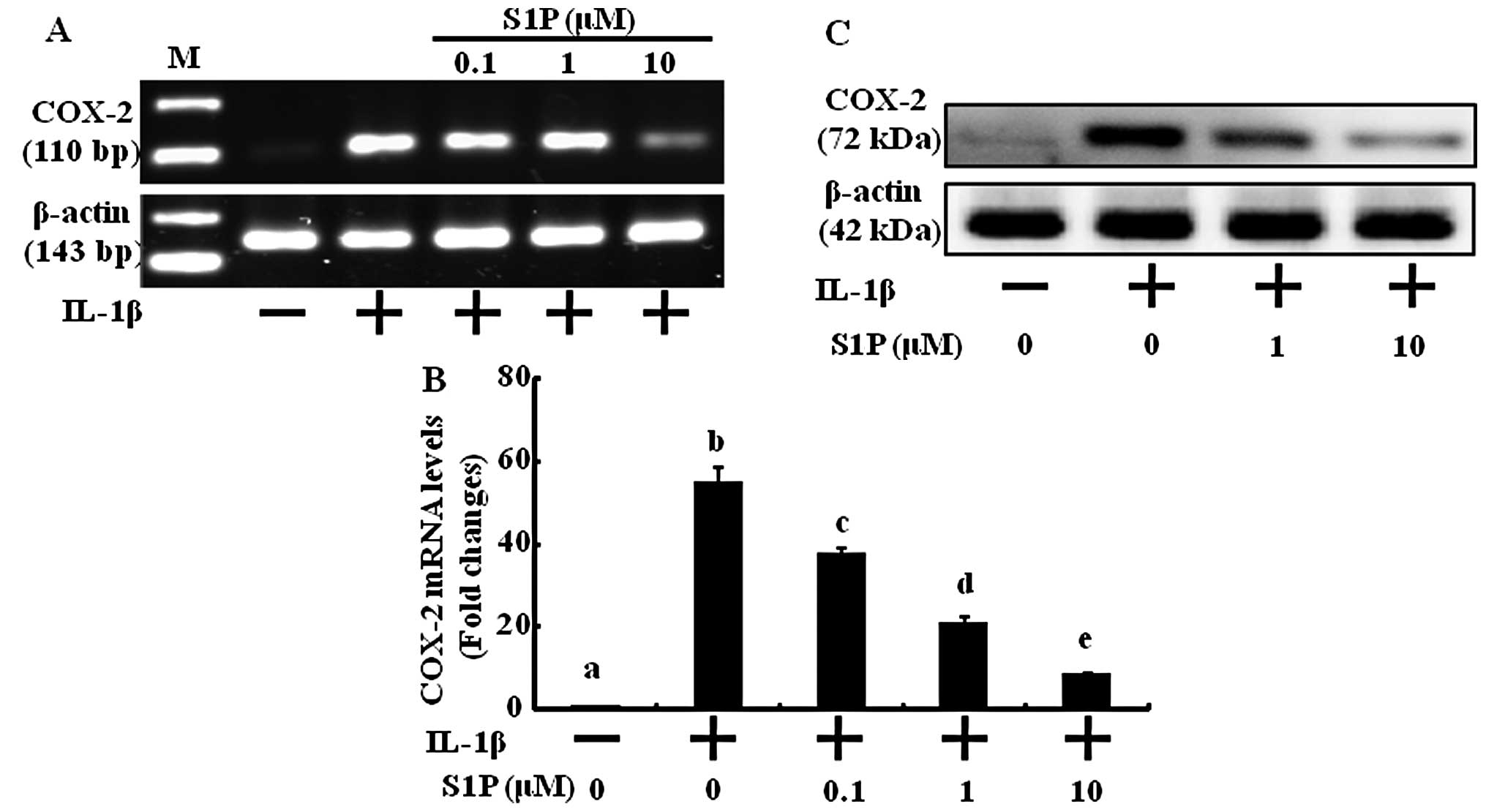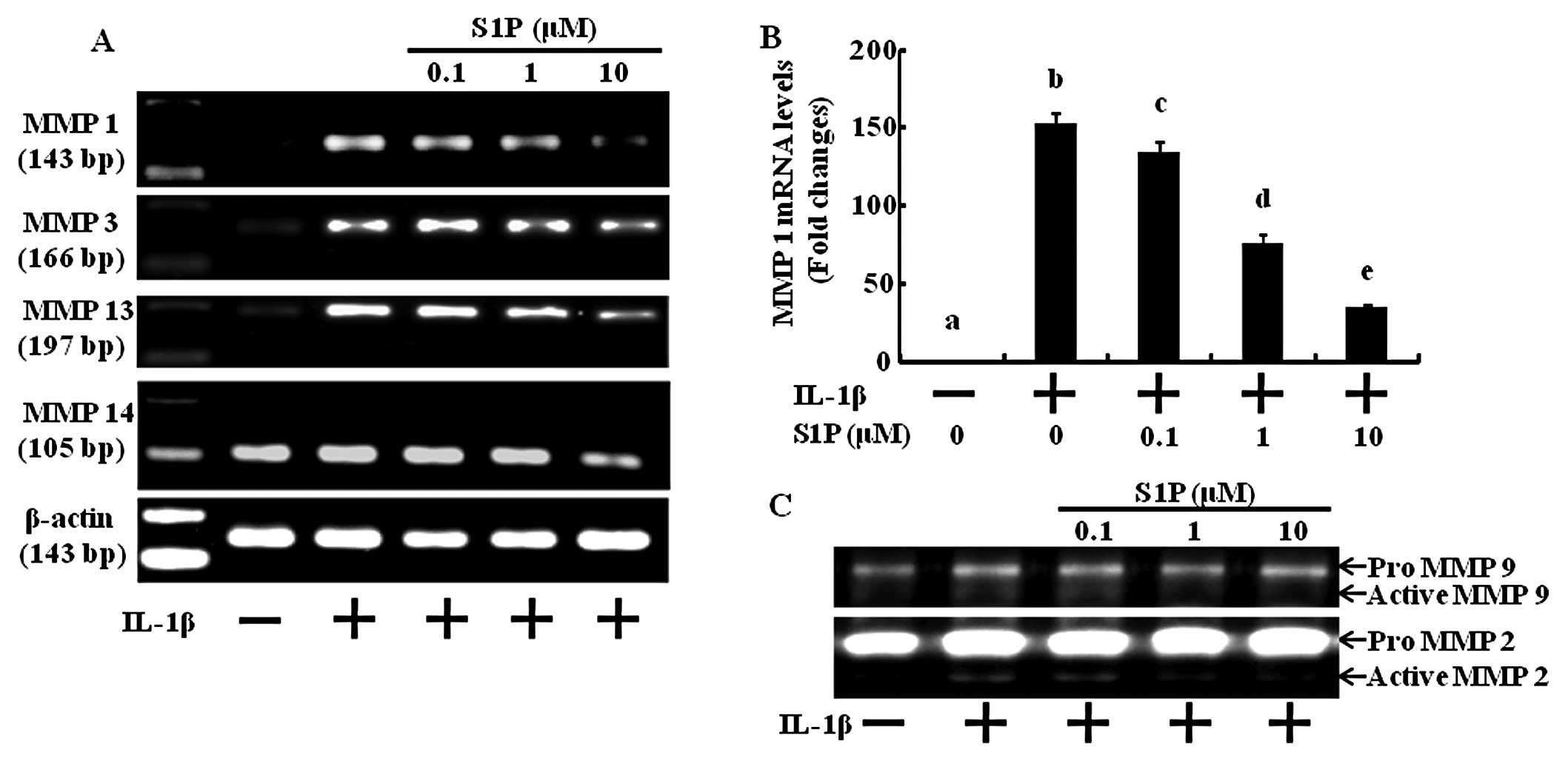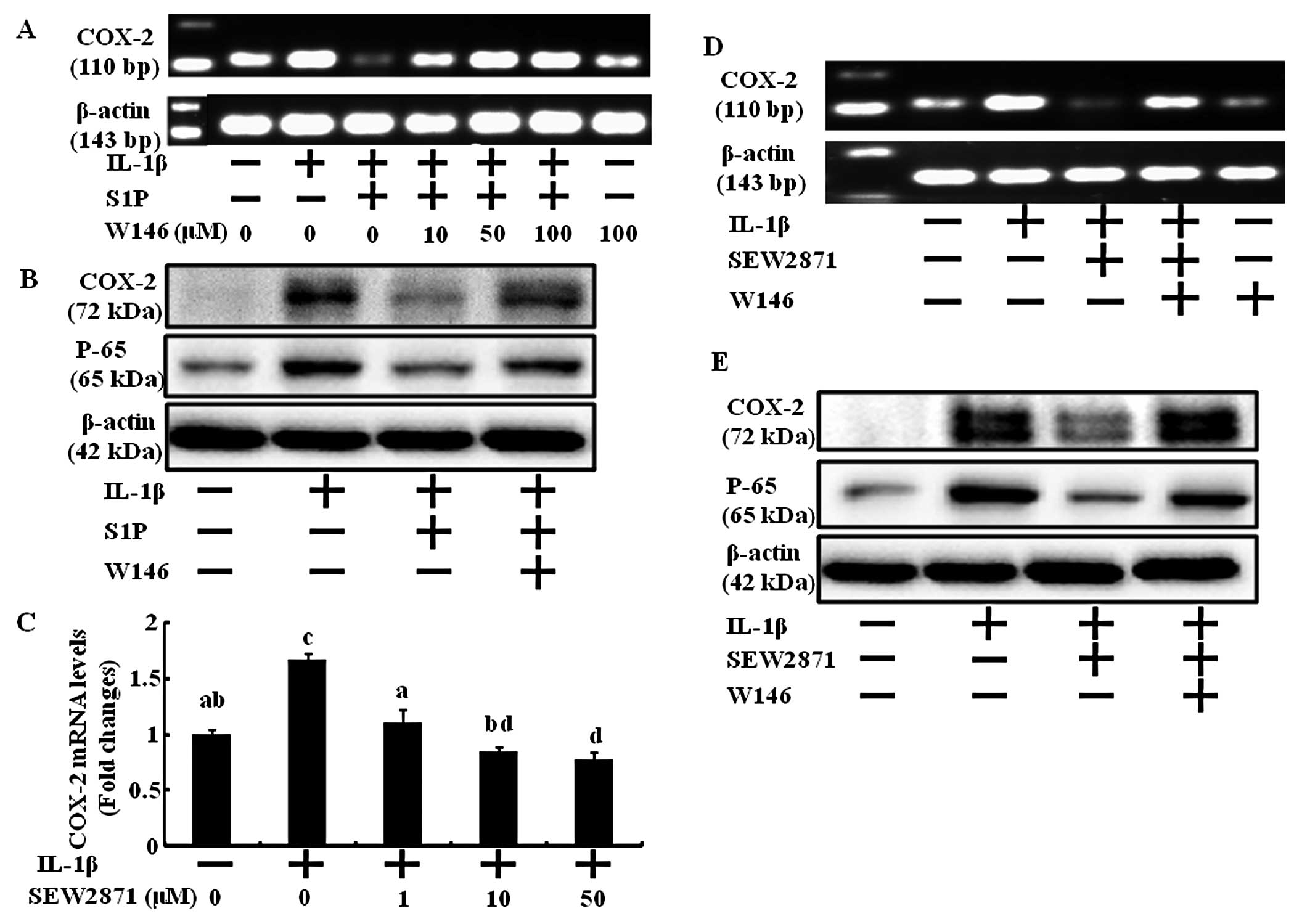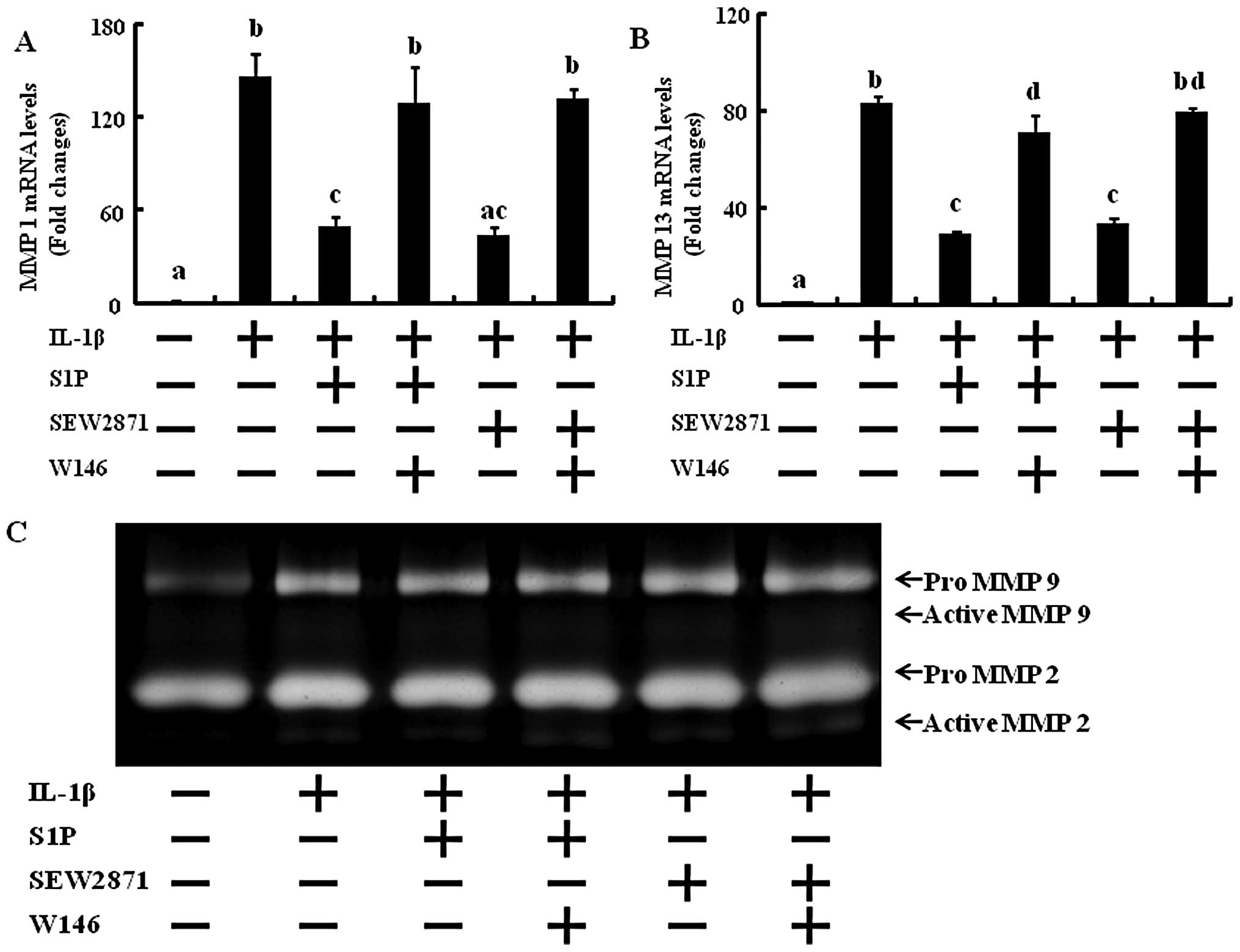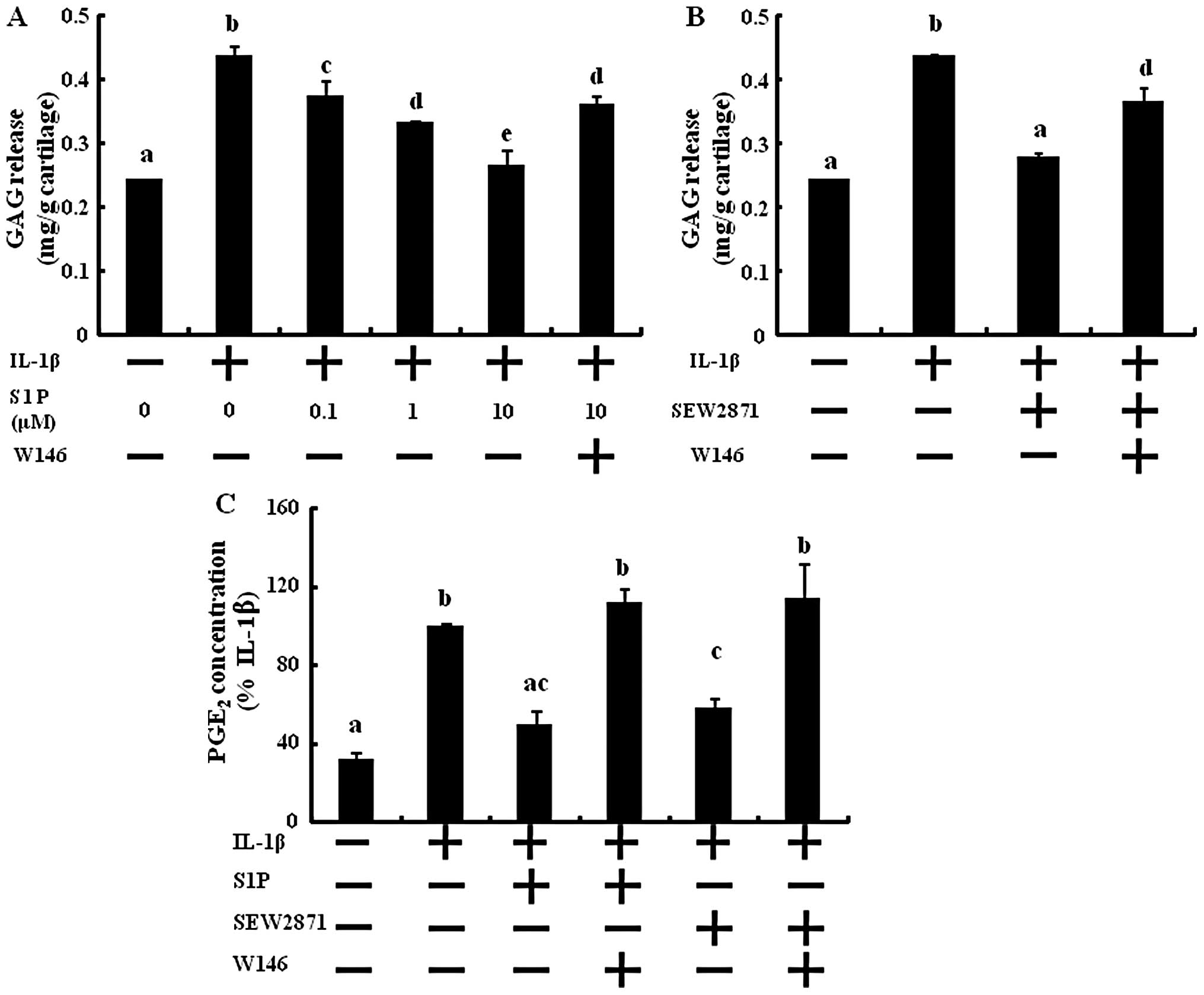|
1.
|
N ChabaneN ZayedH AfifHistone deacetylase
inhibitors suppress interleukin-1beta-induced nitric oxide and
prostaglandin E2 production in human chondrocytesOsteoarthritis
Cartilage1612671274200810.1016/j.joca.2008.03.00918417374
|
|
2.
|
MB GoldringKB MarcuCartilage homeostasis
in health and rheumatic diseasesArthritis Res
Ther11224200910.1186/ar259219519926
|
|
3.
|
MB GoldringF BerenbaumHuman chondrocyte
culture models for studying cyclooxygenase expression and
prostaglandin regulation of collagen gene expressionOsteoarthritis
Cartilage7386388199910.1053/joca.1998.0219
|
|
4.
|
HA KimY YeoWU KimS KimPhase II enzyme
inducer sulphoraphane blocks matrix metalloproteinase production in
articular chondrocytesRheumatology
(Oxford)48932938200910.1093/rheumatology/kep132
|
|
5.
|
C LianxuJ HongtiY
ChanglongNF-kappaBp65-specific siRNA inhibits expression of genes
of COX-2, NOS-2 and MMP-9 in rat IL-1beta-induced and
TNF-alpha-induced chondrocytesOsteoarthritis
Cartilage14367376200610.1016/j.joca.2005.10.00916376111
|
|
6.
|
JP PelletierJ Martel-PelletierSB
AbramsonOsteoarthritis, an inflammatory disease: potential
implication for the selection of new therapeutic targetsArthritis
Rheum4412371247200110.1002/1529-0131(200106)44:6%3C1237::AID-ART214%3E3.0.CO;2-F11407681
|
|
7.
|
EB KoppS GhoshNF-kappa B and rel proteins
in innate immunityAdv
Immunol58127199510.1016/S0065-2776(08)60618-57741027
|
|
8.
|
AS Baldwin JrThe NF-kappa B and I kappa B
proteins: new discoveries and insightsAnnu Rev
Immunol14649683199610.1146/annurev.immunol.14.1.6498717528
|
|
9.
|
R NewtonLM KuitertM BergmannIM AdcockPJ
BarnesEvidence for involvement of NF-kappaB in the transcriptional
control of COX-2 gene expression by IL-1betaBiochem Biophys Res
Commun2372832199710.1006/bbrc.1997.70649266823
|
|
10.
|
M ShakibaeiC CsakiS NebrichA
MobasheriResveratrol suppresses interleukin-1beta-induced
inflammatory signaling and apoptosis in human articular
chondrocytes: potential for use as a novel nutraceutical for the
treatment of osteoarthritisBiochem
Pharmacol7614261439200810.1016/j.bcp.2008.05.029
|
|
11.
|
ED JohnstoneG ChanCP SibleyST DavidgeB
LowenLJ GuilbertSphingosine-1-phosphate inhibition of placental
trophoblast differentiation through a G(i)-coupled receptor
responseJ Lipid Res4618331839200510.1194/jlr.M500095-JLR200
|
|
12.
|
M SchuppelU KurschnerU KleuserM
Schafer-KortingB KleuserSphingosine 1-phosphate restrains
insulin-mediated keratinocyte proliferation via inhibition of Akt
through the S1P2 receptor subtypeJ Invest
Dermatol12817471756200810.1038/sj.jid.570125918219276
|
|
13.
|
S PyneNJ PyneSphingosine 1-phosphate
signalling in mammalian cellsBiochem
J349385402200010.1042/0264-6021:349038510880336
|
|
14.
|
MH StradnerJ HermannH
AngererSphingosine-1-phosphate stimulates proliferation and
counteracts interleukin-1 induced nitric oxide formation in
articular chondrocytesOsteoarthritis
Cartilage16305311200810.1016/j.joca.2007.06.018
|
|
15.
|
R OgawaM TakahashiS HiroseA novel
sphingosine-1-phosphate receptor agonist KRP-203 attenuates rat
autoimmune myocarditisBiochem Biophys Res
Commun361621628200710.1016/j.bbrc.2007.07.06117673173
|
|
16.
|
JE HughesS SrinivasanKR LynchRL ProiaP
FerdekCC HedrickSphingosine-1-phosphate induces an antiinflammatory
phenotype in macrophagesCirc
Res102950958200810.1161/CIRCRESAHA.107.17077918323526
|
|
17.
|
JW SeolHB LeeNS KimSY
ParkTartrate-resistant acid phosphatase as a diagnostic factor for
arthritisInt J Mol Med245762200919513535
|
|
18.
|
MB GoldringThe role of cytokines as
inflammatory mediators in osteoarthritis: lessons from animal
modelsConnect Tissue
Res40111199910.3109/0300820990900527310770646
|
|
19.
|
CM ThomasCJ FullerCE WhittlesM
SharifChondrocyte death by apoptosis is associated with cartilage
matrix degradationOsteoarthritis
Cartilage152734200710.1016/j.joca.2006.06.01216859932
|
|
20.
|
M DaveM AtturG PalmerThe antioxidant
resveratrol protects against chondrocyte apoptosis via effects on
mitochondrial polarization and ATP productionArthritis
Rheum5827862797200810.1002/art.2379918759268
|
|
21.
|
A LiaciniJ SylvesterWQ LiInduction of
matrix metalloproteinase-13 gene expression by TNF-alpha is
mediated by MAP kinases, AP-1, and NF-kappaB transcription factors
in articular chondrocytesExp Cell
Res288208217200310.1016/S0014-4827(03)00180-012878172
|
|
22.
|
DD WoodEJ IhrieCA DinarelloPL
CohenIsolation of an interleukin-1-like factor from human joint
effusionsArthritis
Rheum26975983198310.1002/art.17802608066603852
|
|
23.
|
R LargoMA Alvarez-SoriaI
Diez-OrtegoGlucosamine inhibits IL-1beta-induced NFkappaB
activation in human osteoarthritic chondrocytesOsteoarthritis
Cartilage11290298200310.1016/S1063-4584(03)00028-112681956
|
|
24.
|
AR AminM DaveM AtturSB AbramsonCOX-2, NO,
and cartilage damage and repairCurr Rheumatol
Rep2447453200010.1007/s11926-000-0019-511123096
|
|
25.
|
JY ReginsterR DeroisyLC RovatiLong-term
effects of glucosamine sulphate on osteoarthritis progression: a
randomised, placebo-controlled clinical
trialLancet357251256200110.1016/S0140-6736(00)03610-211214126
|
|
26.
|
R SinghS AhmedN IslamVM GoldbergTM
HaqqiEpigallocatechin-3-gallate inhibits interleukin-1beta–induced
expression of nitric oxide synthase and production of nitric oxide
in human chondrocytes: suppression of nuclear factor kappaB
activation by degradation of the inhibitor of nuclear factor
kappaBArthritis Rheum46207920862002
|
|
27.
|
PS BurrageKS MixCE BrinckerhoffMatrix
metalloproteinases: role in arthritisFront
Biosci11529543200610.2741/181716146751
|
|
28.
|
J Martel-PelletierDJ WelschJP
PelletierMetalloproteases and inhibitors in arthritic diseasesBest
Pract Res Clin
Rheumatol15805829200110.1053/berh.2001.019511812023
|
|
29.
|
M ShakibaeiT JohnG Schulze-TanzilI
LehmannA MobasheriSuppression of NF-kappaB activation by curcumin
leads to inhibition of expression of cyclo-oxygenase-2 and matrix
metalloproteinase-9 in human articular chondrocytes: implications
for the treatment of osteoarthritisBiochem
Pharmacol7314341445200710.1016/j.bcp.2007.01.005
|
|
30.
|
PJ BarnesM KarinNuclear factor-κB: A
pivotal transcription factor in chronic inflammatory diseasesN Engl
J Med336106610711997
|
|
31.
|
L SuomalainenV PentikäinenL
DunkelSphingosine-1-phosphate inhibits nuclear factor κB activation
and germ cell apoptosis in the human testis independently of its
receptorsAm J Pathol1667737812005
|
|
32.
|
K MasukoM MurataH NakamuraK YudohK
NishiokaT KatoSphingosine-1-phosphate attenuates proteoglycan
aggrecan expression via production of prostaglandin E2 from human
articular chondrocytesBMC Musculoskelet
Disord829200710.1186/1471-2474-8-2917374154
|



